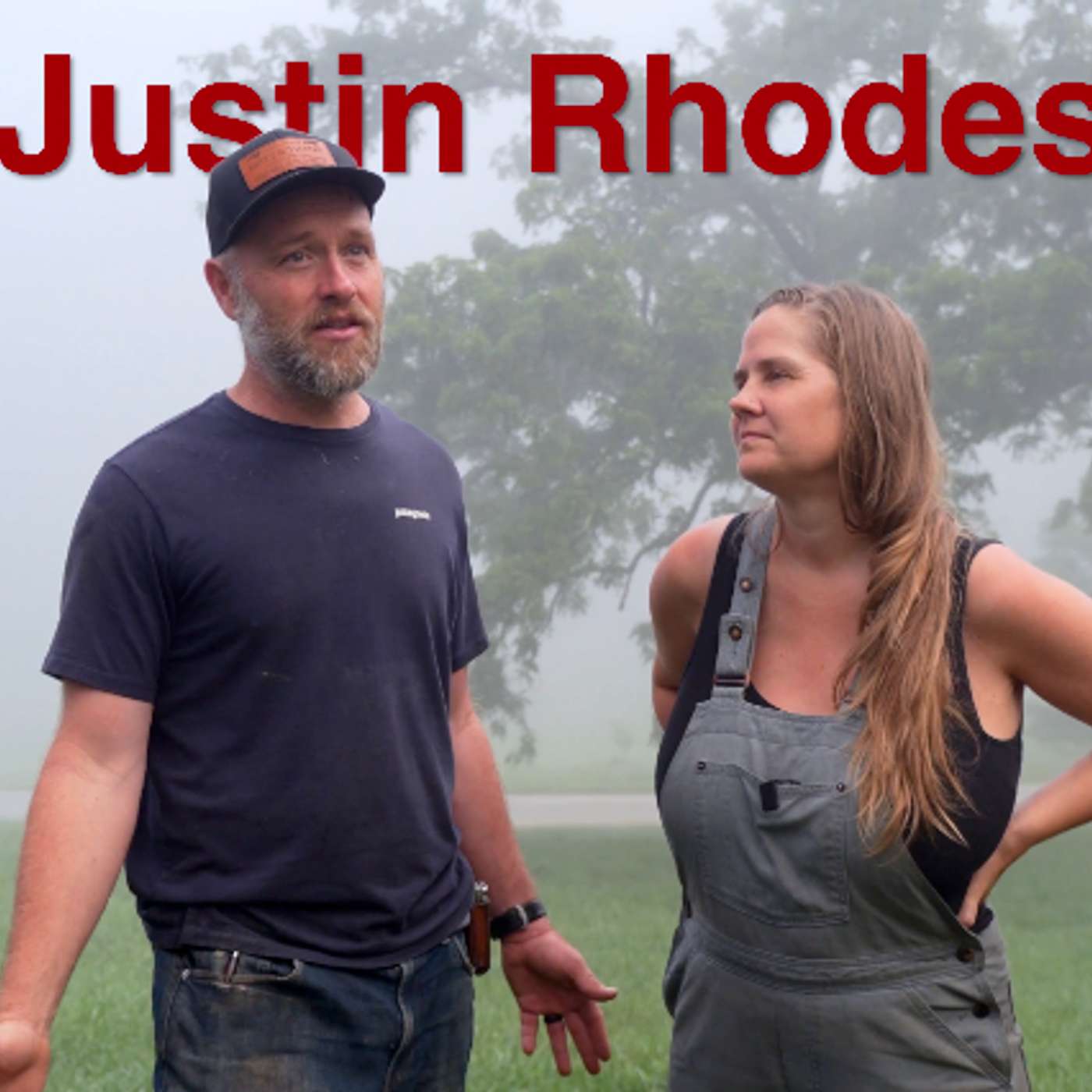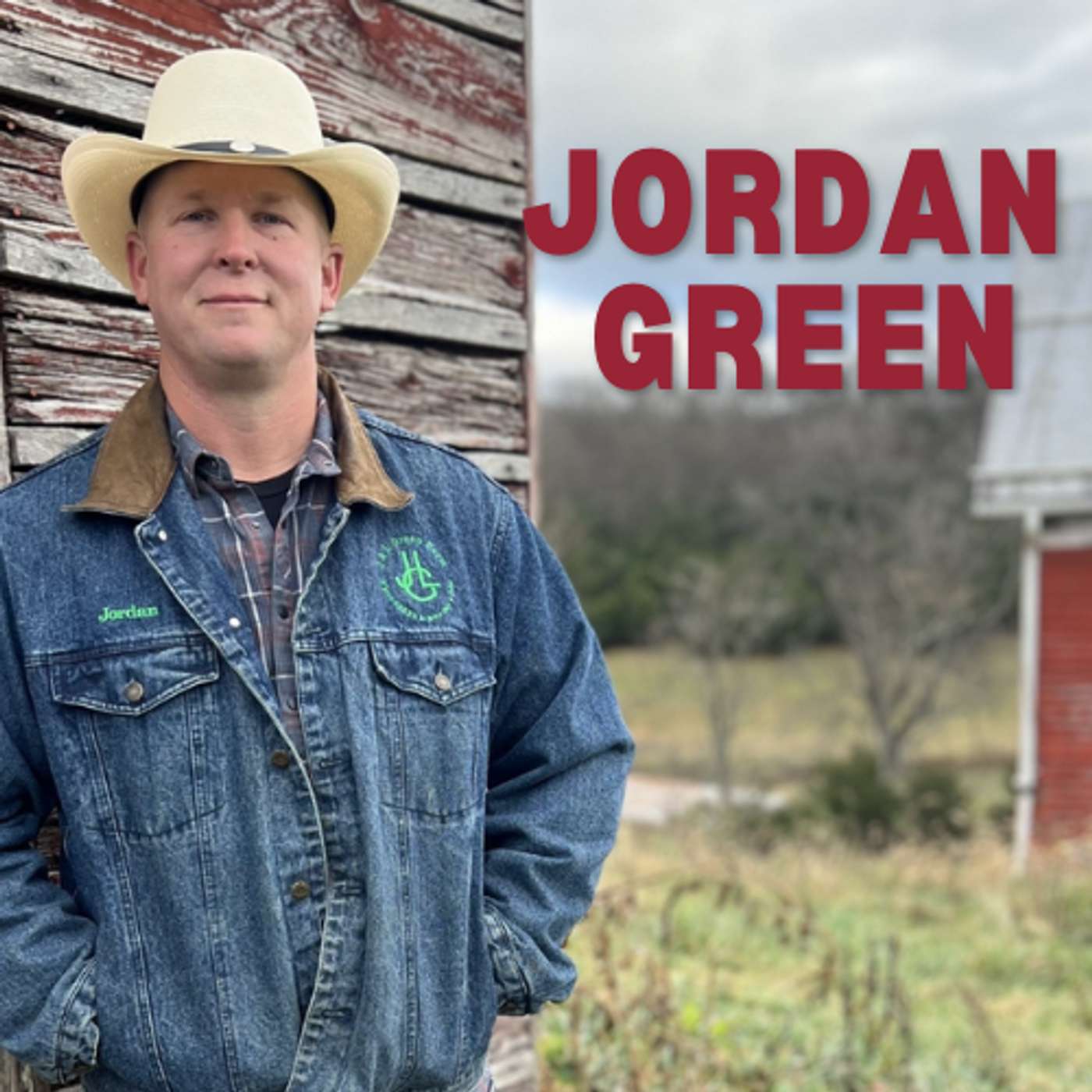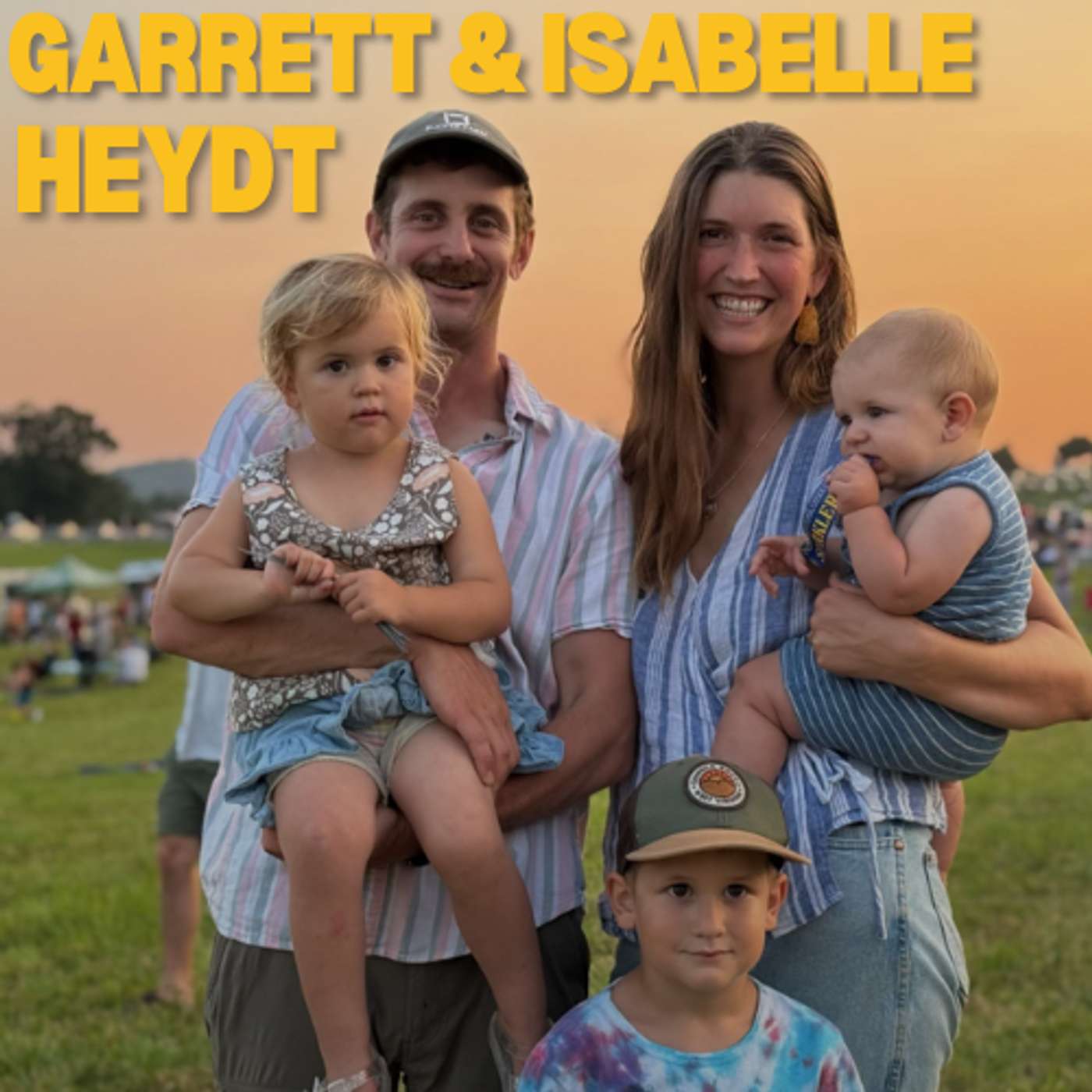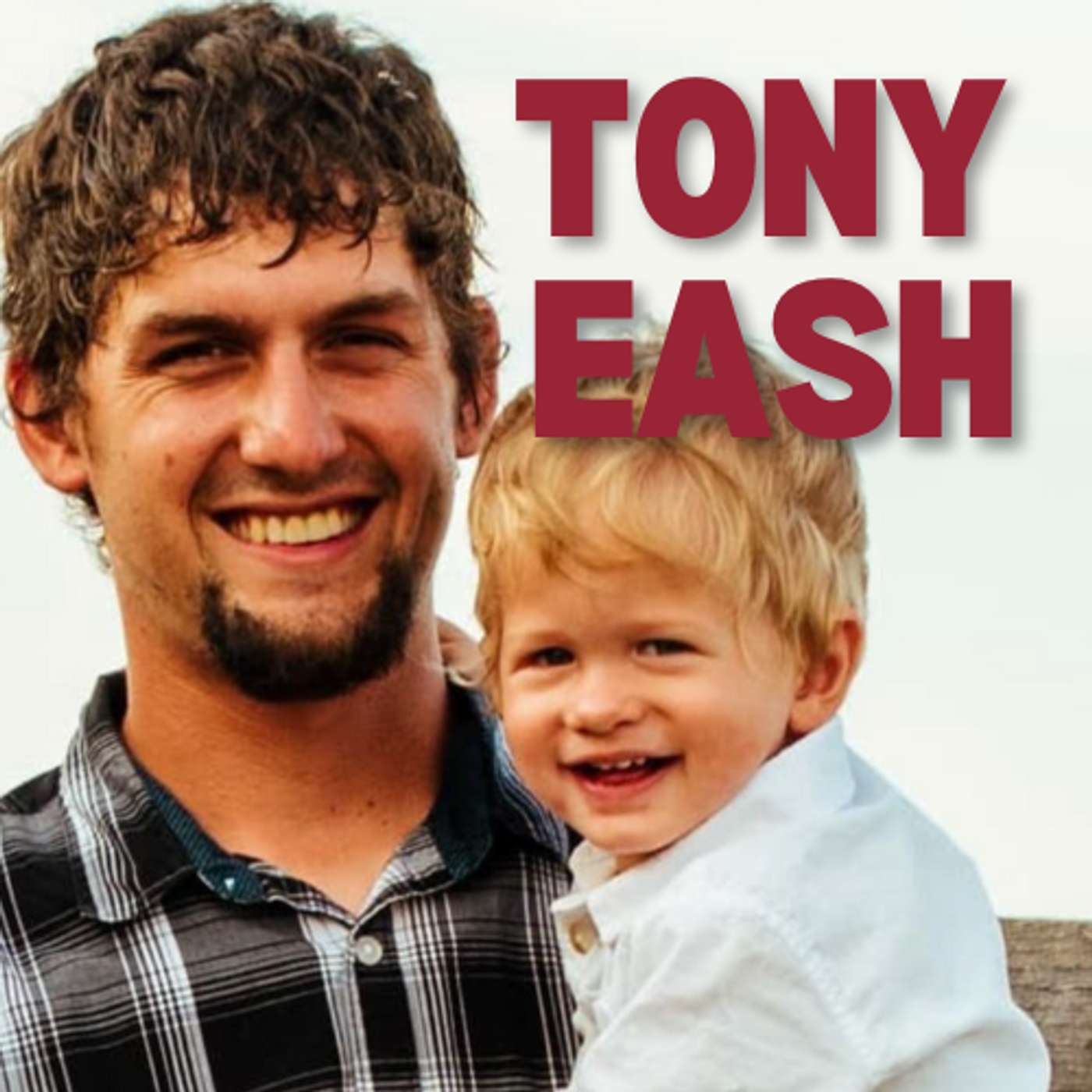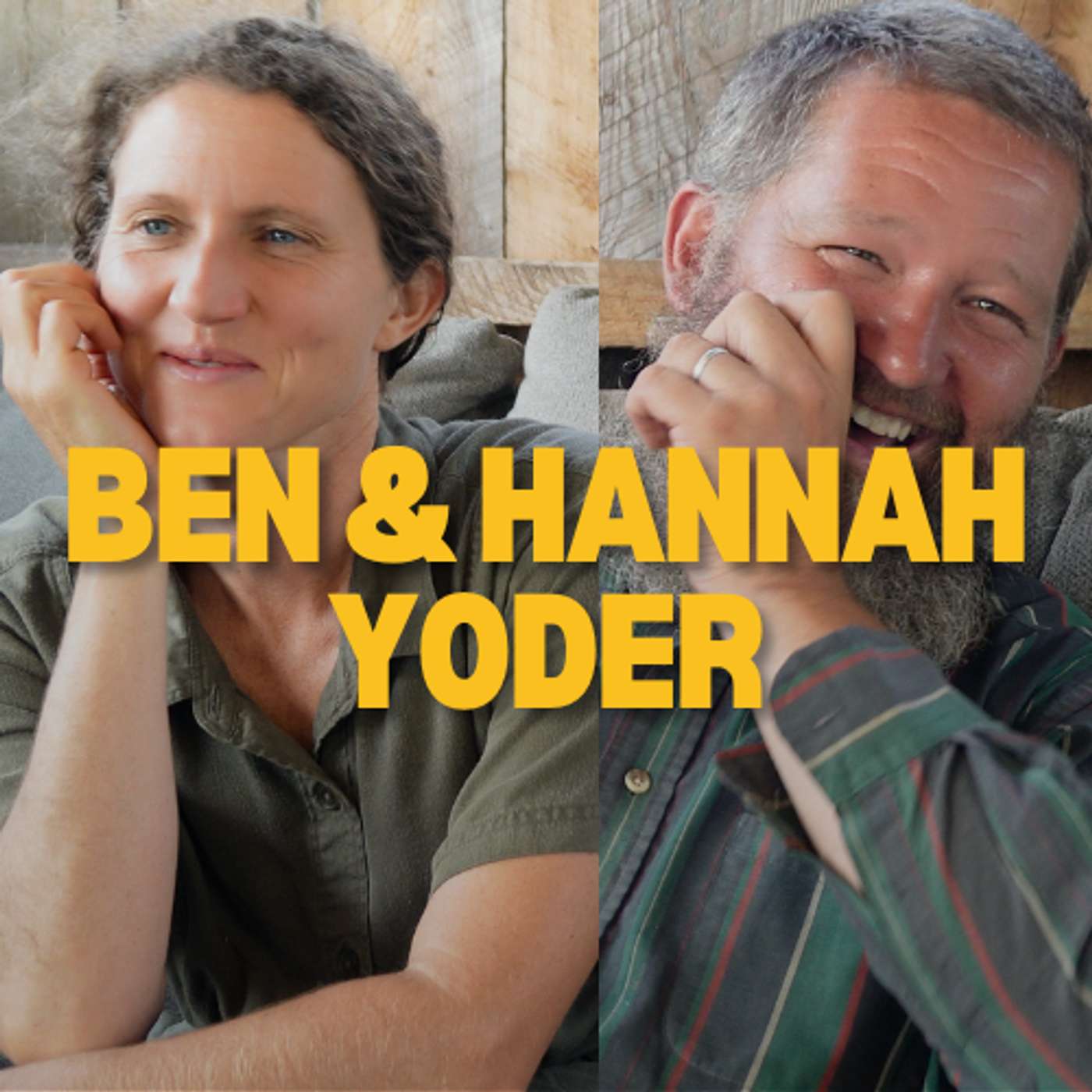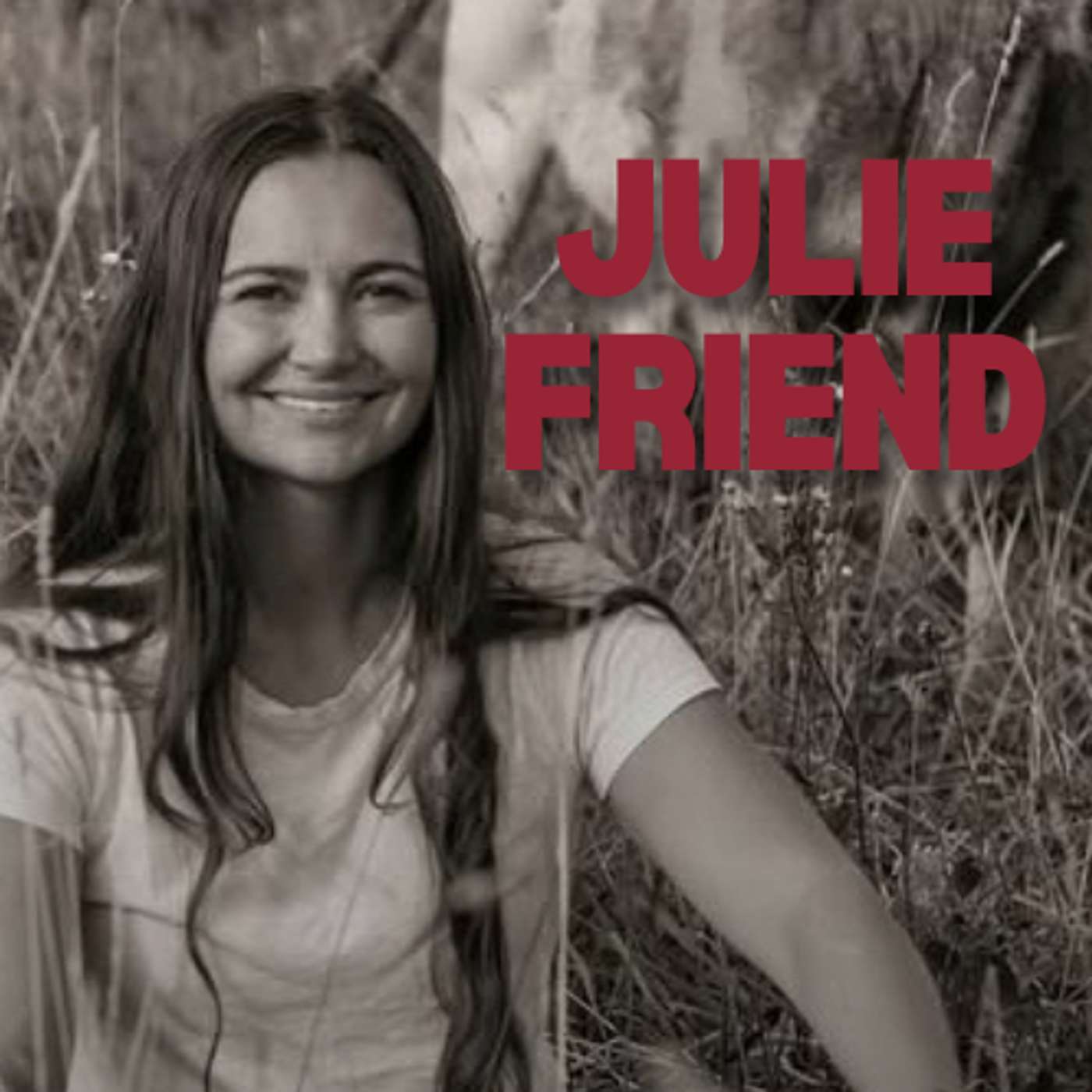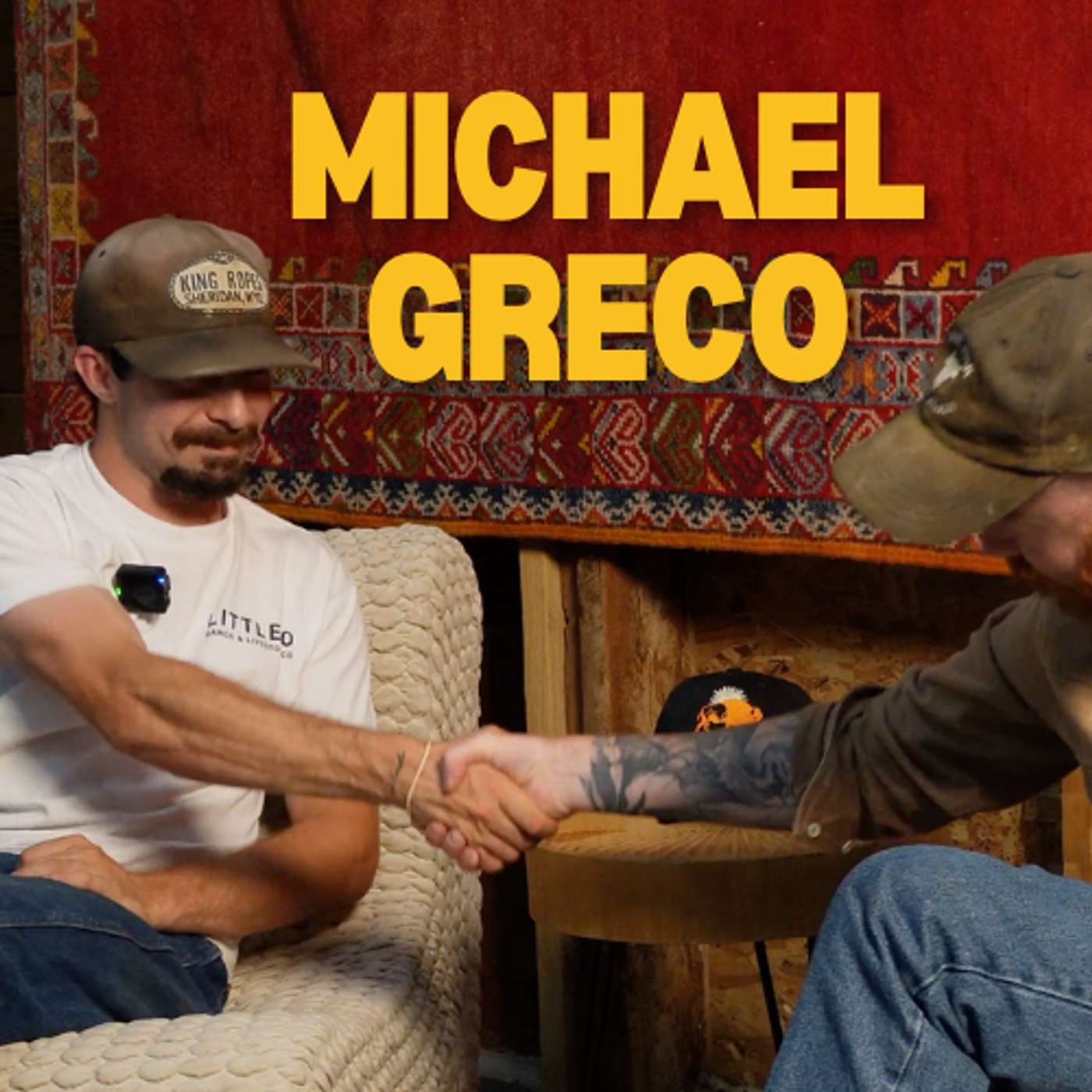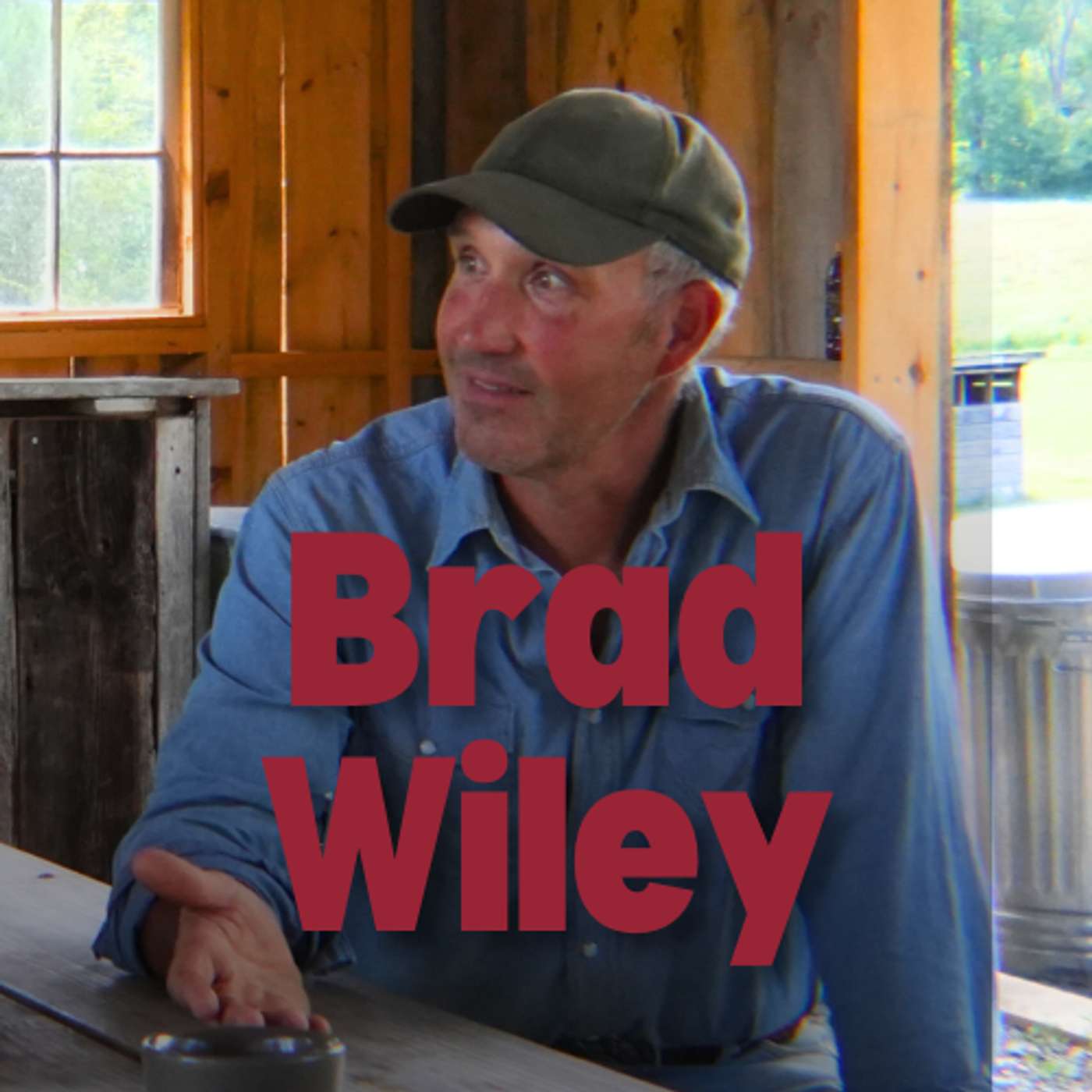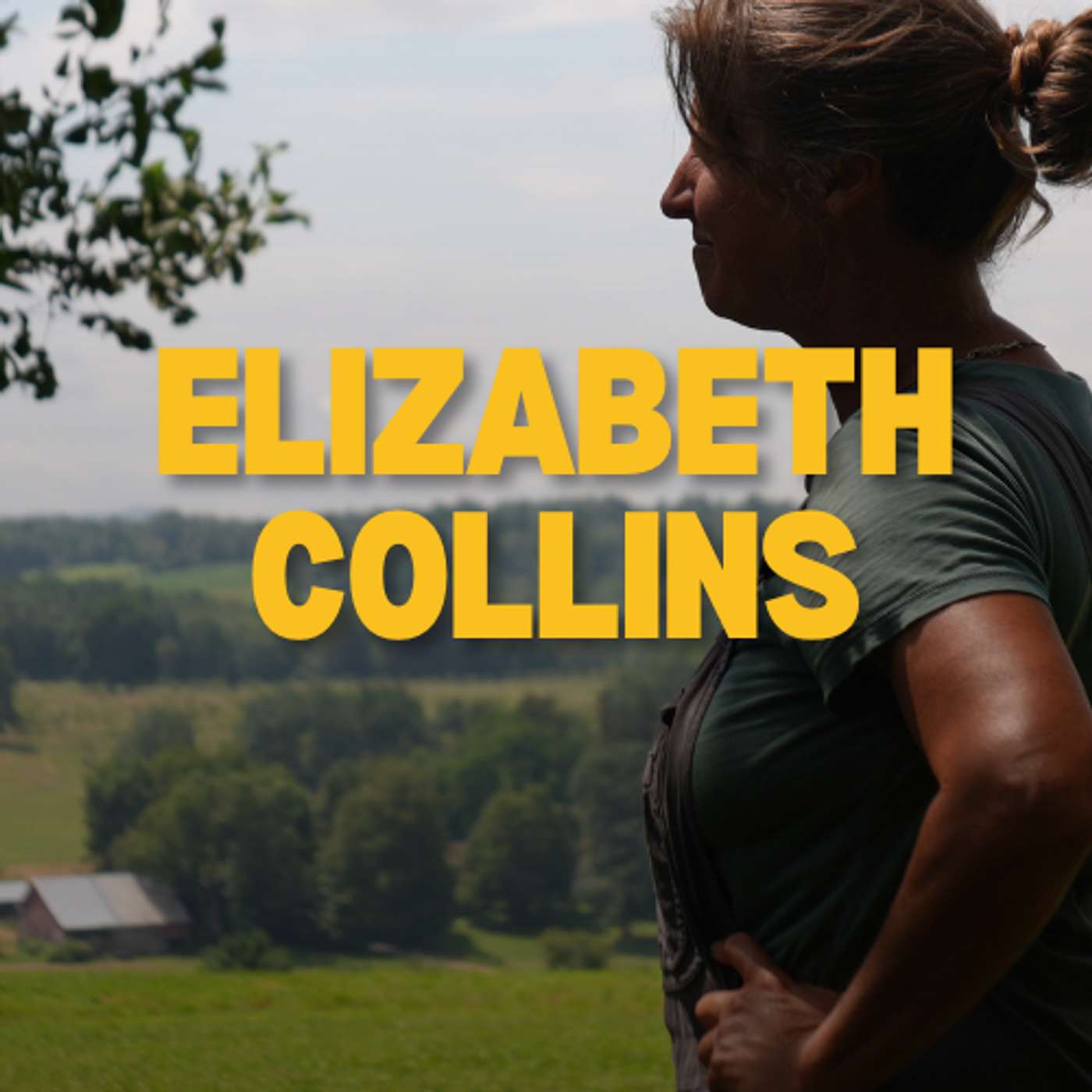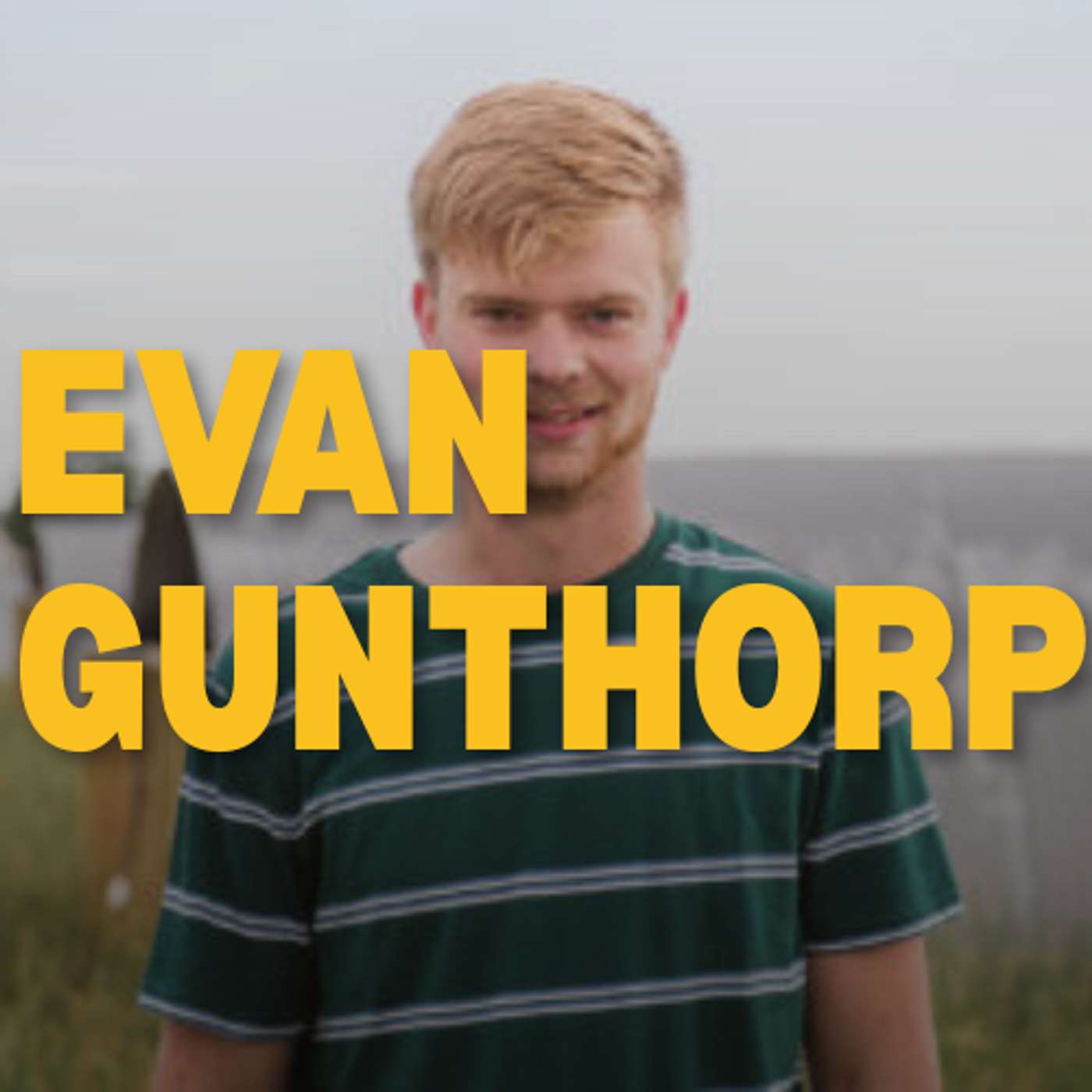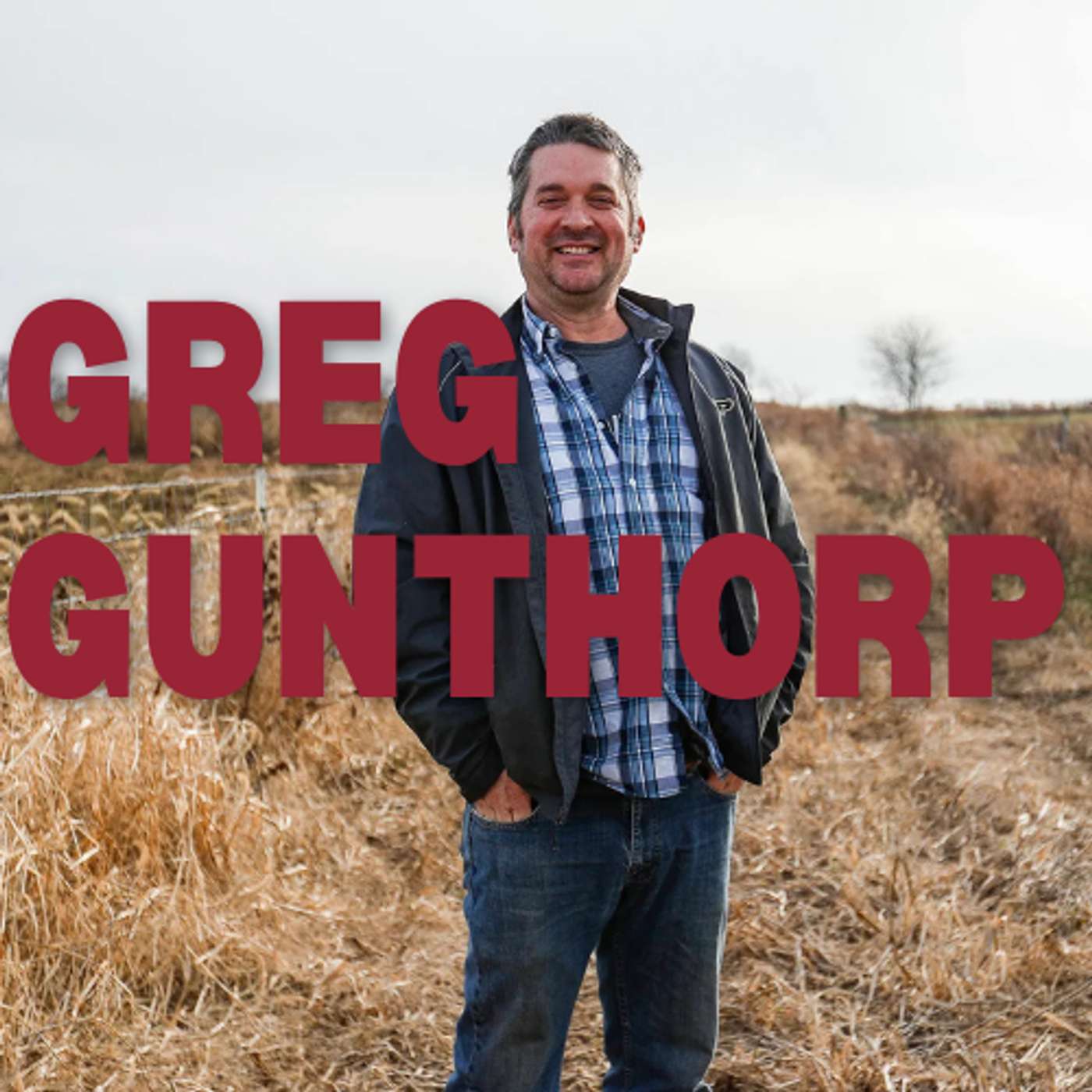Discover The Regenaissance Podcast
The Regenaissance Podcast

The Regenaissance Podcast
Author: The Regenaissance
Subscribed: 15Played: 210Subscribe
Share
© The Regenaissance
Description
Hosted by @Regenaisanceman with the mission of reconnecting us back to where our food is grown & exposing everything that is wrong with our broken food system. We are more disconnected from our food than we ever have been. I sit down with ranchers and farmers to give them a voice and hear their stories, helping paint a picture of what it really looks like to support humanity with food. I also will be talking to others involved in the agriculture space as there is a lot that goes into it all. My hope is that from hearing this podcast you will begin to question what you eat and where from.
93 Episodes
Reverse
JR Burdick of Nourishing Family Farm explains how losing his family’s farm in the 1980s and later being forced out of his dairy co-op shaped his path toward raw milk, soil-based farming, and local food independence. His story exposes how modern agriculture breaks families and communities - and how rebuilding begins one farm at a time.Key TopicsThe 1980s farm crisis and its generational impactIndustrial agriculture’s false promisesLosing and rebuilding the family farmFounding Nourishing Family Farm and producing raw milkRedefining farming as care for soil, cows, and communityWhy ListenReveals how U.S. farm policy hollowed out rural AmericaShows how raw milk and local food rebuild trust and healthOffers a firsthand blueprint for regenerating the land and economyTraces 40 years of American farming through one family’s eyesEnds with a powerful redefinition of what it means to be a farmerConnect with JR:WebsiteXFacebook References:"The Jungle" (1906) by Upton SinclairTimestamps00:00:00 – JR’s 11-generation farming roots on the Michigan–Indiana border00:02:00 – The 1980s farm collapse and how his father lost everything00:06:00 – Interest-rate hikes, debt, and the domino effect across family farms00:10:00 – Starting over from scratch and lessons in resilience00:14:00 – University training, industrial ag mindset, and early GMO exposure00:25:00 – The Green Revolution, “feeding the world,” and the loss of nutrition00:33:00 – How regulation and consolidation centralized food control00:46:00 – Tornado destruction and the community that helped rebuild01:00:00 – Financial strain, insurance gaps, and rebuilding again01:15:00 – Family succession and generational challenges in agriculture01:30:00 – Co-op shutdown in 2022 and six months with no milk income01:45:00 – Ethanol policy, crop insurance, and systemic dependence02:03:00 – Life as a conventional dairyman and marketing realities02:10:00 – Returning to identity as a farmer and faith in the work02:30:00 – Founding Nourishing Family Farm: raw milk & heritage wheat02:45:00 – Food as medicine and healing through nutrient-dense food03:00:00 – Lessons in stewardship, soil, and community resilience03:10:00 – Redefining what it means to be a farmer in modern America
August Hortsmann is a first-generation Missouri cattleman and founder of Hortsmann Cattle Company, a regenerative ranch built on his family’s land near St. Louis. What began as a childhood passion grew into a full-time operation which, over the past eight years, has integrated adaptive grazing, direct-to-consumer beef sales, and long-term soil-focused practices. His education was established through years of study, observation, and trial. August spent countless seasons working ranch jobs integrating regenerative practices, allowing him studying grazing systems and testing various methods. Augusts story shares undertones of the uncertain, long road taken for each farmer to reach their dream of working full-time. For August, as you'll hear, he made it happen, but for 84% of farmers in America, they work other jobs. August shares his shift from conventional, university-trained agriculture to regenerative practice, the economic realities of running a small meat business, and his philosophy on scale, sustainability, and soil health.Key TopicsEarly life and the arduous path to founding Hortsmann Cattle CoTransition from conventional to regenerative grazingWhy multi-species farming can break a businessWhat adaptive grazing actually looks like on the ground'Breaking even' and the economic realities of cattle farmingScaling regenerative agriculture for the futureWhy You Should Listen- What the path to full-time farming really looks like- How farmers survive years before breaking even- Building a regenerative cattle business from nothing- Lessons from eight years of adaptive grazing- The hard economics of small-scale beefConnect with AugustInstagramWebsite Timestamps00:00:00 – Childhood roots and first memories on the family farm 00:03:00 – Starting Hortsmann Cattle Co in college 00:06:00 – University teachings vs. real-world economics 00:10:00 – Working off-farm while building a cattle business 00:13:00 – Discovering regenerative agriculture through Soil & Water 00:19:00 – Adding multi-species and the “death by diversity” lesson 00:29:00 – Burnout and the decision to simplify operations 00:31:00 – Quitting full-time work and going all-in on the farm 00:36:00 – Adaptive grazing and learning from nature’s rhythms 00:43:00 – Shifting from farmers’ markets to online direct sales 00:53:00 – Educating consumers on bulk buying and real costs 00:57:00 – Why small meat businesses struggle with margins 01:03:00 – Processing, scale, and the bottlenecks of small producers 01:09:00 – Is regenerative agriculture scalable? 01:13:00 – Advice for aspiring ranchers 01:17:00 – Social media, misinformation, and consumer trust 01:20:00 – Building a ranch that can sustain future generations
Will Harris is a sixth-generation cattleman and owner of White Oak Pastures, a 158-year-old family farm in Bluffton, Georgia. Since 1866, the Harris family has practiced land-based farming rooted in regeneration, humane animal husbandry, and zero-waste production. In this episode, Will reflects on the farm’s evolution from industrial cattle operations to a living ecosystem. He discusses soil, community, balance, symbiosis in an ecosstem, rural farming communities, stewardship, organic matter, his family history, and more. Key Topics6 generations of farming - from industrial cattle to regenerative systemsRebuilding Bluffton’s rural economy through local foodSoil carbon, organic matter, and ecological limitsThe moral and generational lessons of land stewardshipRethinking success: humility, balance, and long-term thinkingWhy You Should ListenHow six generations turned an industrial farm into a living ecosystem.Why killing pests and controlling nature backfired What it takes to rebuild a town’s economy The real economics of land, legacy, and long-term thinking.Why humility- not technology - is the key to surviving the human dilemma.Connect With White Oak PasturesWebsiteInstagramTimestamps00:00:00 — White Oak Pastures and 158 years of family farming 00:05:00 — Industrial agriculture and losing balance 00:08:00 — The cost of control: chemicals and confinement 00:11:00 — Soil carbon, fertility, and organic matter 00:16:00 — Working within nature’s limits 00:25:00 — Rejecting tech fixes and restoring balance 00:34:00 — Internships, purpose, and community revival 00:42:00 — Bluffton’s renewal through local production 00:50:00 — Land, debt, and long-term stewardship 00:55:00 — Generational transfer and humility 01:08:00 — Observation, faith, and living with nature
Ryan sits down with Joel Hollingsworth of Smoke River Ranch in Oklahoma, who lays out a clear, unflinching diagnosis of America’s decline. He then takes you through the solution, step by step, exactly whats required. In short, the miracle ahead has only one path, and that is a restored and vitalized rural America. Key Topics:Collapse and renewal of rural AmericaBuilding culture through community and soilRegenerative ranching and total grazingEconomic sovereignty and local productionReclaiming health and vitalityWhy You Should Listen: - Learn how rural collapse happened. - See how financialization hollowed America. - Understand why soil and economy are linked. - Discover how regeneration rebuilds communities. - Hear a practical plan for renewal.Resources mentioned:Book: The Omnivore’s Dilemma by Michael PollanBook: Extreme Ownership by Jocko WillinkConnect with Joel:Smoke River Ranch WebsiteX00:00:00 – America’s decline and lost vitality 00:04:30 – Joel’s story and Smoke River Ranch 00:11:00 – Finance replacing real production 00:20:10 – Centralization and moral decay 00:29:40 – What regeneration means 00:38:25 – Soil as civilization’s base 00:46:50 – Rebuilding local economies 00:56:30 – Tech and virtual fencing 01:05:00 – The real economics of farming 01:16:15 – Decentralization and freedom 01:28:10 – Work, dignity, and meaning 01:38:40 – Food, health, and strength 01:52:20 – Cultural cost of disconnection 02:09:00 – Rural vitalism in action 02:27:15 – Rebuilding soil, rebuilding America
When chronic illness left Cindy bedridden in her twenties, she began questioning everything she’d been taught about health - and later, about farming. What started as a search for healing led her and her husband to rebuild their land in Burneyville, Oklahoma, where TLC Ranch now stands: a regenerative bison ranch and certified organic pecan orchard rooted in living systems rather than chemicals. Through decades of trial, floods, and faith, Cindy discovered that the same principles that restore the body also restore the soil. This episode traces how her recovery became the land’s recovery - and what it really means to live and farm in alignment with nature.Key Topics- Healing through food and faith- From chemical sprays to organic farming- Bison behavior and herd management- The challenges of organic certification- Health, medicine, and trusting intuitionTimestamps 00:00:00 – Growing up outdoors and learning self-reliance 00:04:00 – Linking diet and chronic illness in the 1980s 00:08:00 – Healing through food and natural living 00:12:00 – From chemical farming to organic awareness 00:19:00 – Buying land and starting the ranch 00:27:00 – Discovering bison and learning their behavior 00:31:00 – Pecans as nutrient-dense local food 00:44:00 – Challenges of organic certification 00:53:00 – Replacing chemicals with biological inputs 00:58:00 – Managing herd health and natural balance 01:05:00 – Lessons from floods and renewal on the landWebsiteFacebookInstagram
Caden and Patrick are first-generation farmers in North Carolina who started Cable Family Farm while still in high school. Together, they’ve built a small-scale regenerative farm focused on pasture-raised poultry and no-till market gardening, proving that young people can make a living from the land through hard work, curiosity, and faith.Cable Family Farm practices regenerative farming focused on soil health, animal welfare, and local connection through small-scale, community-based food production.Key TopicsStarting a regenerative farm as teenagersLearning and adapting through trial and errorMaking small-scale farming sustainableSacrifice, purpose, and faith in farmingInspiring young people to reconnect with foodTimestamps00:00:00 – Discovering small-scale farming 00:02:45 – Launching Cable Family Farm in high school 00:06:00 – Rekindling friendship and building together 00:09:00 – Visiting Polyface Farm for inspiration 00:10:30 – Selling produce and entering markets 00:14:00 – Lessons from larger conventional farms 00:17:00 – Partnership, long hours, and learning curves 00:21:00 – Sacrifice and fulfillment on the land 00:25:00 – Bringing younger generations into farming 00:35:00 – Faith and stewardship of the land 00:40:00 – Balancing college with farm life 00:42:00 – Reflections on growth and purposeConnectInstagramFacebook
This episode is a little different: instead of a sit-down podcast, I join Justin Rhodes for a live tour around his North Carolina farm. When you think of homesteaders, Justin Rhodes is the first person you think of. With over a million followers on YouTube and multiple successful books, Justin and his family have paved the way for new homesteaders through documenting their journey. A fourth-generation steward of his family’s land in North Carolina, Justin and his wife Rebecca raise their five children on it. What we cover:How rotational grazing restores pastures without seed or fertilizerThe challenges and realities of homesteading versus farming for profitBalancing family life, children, and farm responsibilitiesWhy many new homesteaders burn out and how to avoid itThe generational legacy of farming the same land and what it means for the futureTimestamps:00:01:30 — The breeds of cows on the farm and how milk is shared00:03:00 — Family land history and what the farm cost in the 1930s00:05:00 — Rotational grazing explained and why clover survives00:09:00 — Homesteading vs farming: growing food for yourself or for sale00:13:00 — Why most new homesteaders burn out and how to prepare00:17:30 — Finding a deeper reason beyond money to keep farming00:19:00 — Involving children in farm life and family teamwork00:21:00 — The multi-generational connection to land and legacy00:23:00 — Raw milk, safety, and family traditions00:25:00 — Industrial milk history, swill dairies, and why pasteurization beganJustin's YouTube channelInstagramFarm Website
Josh and Jessica Guptill run Rehoboth Farm in Suffolk, Virginia, where they raise pastured chicken, pork, lamb, beef, eggs, and turkeys. Neither came from a farming family - Josh left the Coast Guard and Jessica is a doula - but together they built their farm from backyard beginnings, guided by faith and a belief in producing “healing food.” Their path is unique: from DIY chicken pluckers and bartering for land to scaling up during COVID, they’ve made transparency and education central to their work. Today they not only provide nutrient-dense food but also host workshops and farm visits, giving their community a firsthand connection to how food is grown.This episode we discuss:What backyard chickens taught them about the realities of food productionHow different animals (chickens, pigs, sheep, cattle) work together to regenerate landWhy transparency and on-farm visits build trust between farmers and eatersThe role of farmers’ markets, and what separates thriving ones from failing onesHow faith and community shape their vision of farming as a vocationTimestamps:00:00:00 Josh & Jessica’s backstory and first encounters with farming00:07:00 Early challenges raising and butchering chickens00:13:00 Deciding to leave the Coast Guard and pursue farming00:19:00 Finding and moving onto their current Virginia farm00:25:00 Scaling up chickens, pigs, and lamb during COVID00:33:00 Why their farmers’ market works—and why others fail00:40:00 Marketing, transparency, and building customer trust00:48:00 The meaning behind the name “Rehoboth Farm”00:53:00 Questions consumers should ask at farmers’ markets01:00:00 Hosting on-farm classes and why visits matterWebsiteInstagramFacebook
In this episode, Jordan and I discuss the importance of economics, marketing, and storytelling in agriculture. Follow the tour on YouTubeJordan Green is a U.S. Marine Corps veteran who served multiple deployments before completing a five-year tour of duty in 2009 and transitioning into full-time farming with his wife, Laura.Together, Jordan and Laura founded J&L Green Farm in Virginia’s Shenandoah Valley, where they raise pasture-based pork and poultry and 100% grass-fed beef on 500 acres, marketing their food directly to consumers.Key TopicsEscaping the industrial poultry system and its impact on animals and farmersApprenticeship at Polyface Farm and lessons from Joel SalatinMilitary service and how it shaped the decision to start J&L Green FarmThe struggles of starting a farm business during the 2008 financial crisisWhy marketing and storytelling matter as much as production in regenerative farmingTimestamps:00:00:00 Why cheap food threatens the survival of American farms00:03:00 Inside poultry houses: dust, ammonia, and farmer servitude00:08:00 Contracts, mortgages, and the trap of industrial poultry farming00:17:00 Apprenticeship at Polyface and scaling pasture-based livestock00:24:00 The reality of death and livestock farming behind the scenes00:29:00 Joining the Marines and balancing military life with farm dreams00:36:00 Starting J&L Green Farm with land, capital, and a Polyface contract00:40:00 Surviving the 2008 housing crash while building a farm business00:42:00 Why marketing is the hardest but most crucial part of farming00:49:00 The clash between fast tech and slow ecology in food production00:55:00 Building customer relationships, not flash sales01:00:00 Why most farms aren’t welcoming to the public and how J&L differsConnect with Jordan, J&L Farm:WebsiteInstagramFollow the tour on YouTube
The USDA has farmers by the balls. We all know it. Bryson felt it, and quickly chose to fight it. He found legit workarounds and today educates us on how other farmers can help stabilise and control their own futures. Bryson Lipscomb of Triple Oak farms - a military veteran turned first-generation farmer, who traded his 9-5 job to become a farmer and build his own life with his wife and then newborn son. Bryson bring a refreshing & unique perspective on American farming, unfiltered for sure and very grounded. He shares the struggles and blessings of starting from scratch, the pretty messed realities of USDA processing (spoiler - it's way worse than you think), navigating regulations and the search for alternatives (such as the private membership association - PMA) that keep food sovereignty in the hands of the people.This one certainly echoes faith, food, freedom in America, now and in the future. Enjoy. Triple Oaks Farm is a family-run regenerative farm in Virginia, raising pastured pigs and other livestock with a focus on food sovereignty, stewardship, and community.Key TopicsCOVID as a wake-up call for food independenceThe realities of raising animals on pastureStewardship, resilience, and lessons from livestockIndustrial processing vs. small farm alternativesFaith, freedom, and food sovereignty through PMAsTimestamps00:01:00 COVID meat shortages spark the leap into farming00:04:00 First pigs, early mistakes, and discovering regenerative farming00:09:00 Pig escapes and fencing failures — hard lessons in stewardship00:18:00 From alcoholism to faith — how farming changed everything00:31:00 Why small farms can’t compete with Smithfield00:34:00 The hidden costs of USDA butchering00:43:00 Dominion, faith, and the moral conflict of unjust laws01:00:00 Mishandling, fraud, and corruption inside USDA plants01:08:00 Final breaking point — walking away from USDA processors01:13:00 Discovering the PMA model as a legal path forward01:20:00 Building a farm rooted in faith, sovereignty, and community01:30:00 Why resilience, stewardship, and sovereignty matter for everyone01:40:00 Closing reflections on food freedom and the future of Triple OaksConnect With Triple OaksWebsiteInstagramFollow the tour on YouTube
Farm tour #8. Isabelle and Garrett Heydt, of Rucker Farm in Virginia share their journey from vastly different childhoods to building a thriving regenerative farm and raising three young children. They discuss how they started with just a handful of chickens, grew into pigs and cattle, built community through barter events and markets, and navigated the challenges of balancing family life with the demands of farming. Their story highlights both the struggles and rewards of choosing a life close to the land.Rucker Farm is a regenerative family farm in Virginia raising pastured beef, pork, and poultry with full transparency and care for the land. They rotate animals daily, avoid confinement, and even invite the public to their on-farm harvests to reconnect people with real food.Key TopicsFrom contrasting childhoods to a shared farming pathStarting with 50 chickens and scaling upRaising a family while running a farmFamily, farming, and community at the centerRegenerative vs. conventional cattle operationsMarketing, markets, and authentic customer tiesTimestamps00:02:00 – Isabelle’s upbringing on Rucker Farm and her family’s farming background 00:07:00 – Garrett’s childhood in Baltimore and path into outdoor guiding 00:12:00 – Meeting in West Virginia, homesteading, and renovating their first house 00:20:00 – Moving back to Rucker Farm in 2020 during the pandemic 00:23:00 – Why they started with chickens and how it scaled into pigs and cattle 00:25:00 – Hosting barter tables and building community around food and farming 00:33:00 – Partnerships, land access, and support from American Farmland Trust 00:37:00 – Advice for new farmers on building relationships and opportunities 00:39:00 – Isabelle’s approach to marketing, storytelling, and authenticity 00:45:00 – The realities and challenges of farmers’ markets 00:55:00 – Educating consumers on cooking grass-finished beef 01:01:00 – Raising children on the farm and connecting them to natureConnect with Rucker FarmWebsiteInstagramFollow the tour on YouTube
Farm tour #7. Today we interview farmer Tony Eash, from Triple E farms. Triple E Farms is a family-run raw dairy and livestock farm in West Virginia, operated by brothers Tony and Phil. Farming since childhood, they grew up raising animals on pasture and chose a regenerative path after the sudden loss of their father. Today they produce 100% grass-fed, pasture-raised, non-GMO beef, pork, poultry, and raw dairy, combining traditional practices with appropriate modern technology to provide pure, nutrient-dense food for their family and community.Key topicsTransition from conventional dairy to regenerative farmingCommunity support and resilience after personal lossWest Virginia’s raw milk laws and policy changesWorking with Amish partners for poultry and turkey supplyAdvice for aspiring farmers entering regenerative agricultureTimestamps 00:00:00 Challenging perceptions of farmers and profitability 00:01:00 From Amish roots to dairy farming in Virginia 00:03:00 Turning away from commercial chicken houses 00:04:00 Starting with broilers and expanding to pigs, beef, and dairy 00:08:00 Growing up on a small hobby farm and making hay 00:12:00 Losing his father and coping through work 00:14:00 Mennonite community support after tragedy 00:18:00 Building a raw milk customer base 00:20:00 Raw milk laws in West Virginia 00:26:00 Questions to ask when buying milk or visiting farms 00:28:00 Testing, cleanliness, and raw vs. pasteurized costs 00:32:00 Balancing full-time jobs with farm demandsConnect with Triple EWebsiteInstagramFollow the tour on YouTube
Farm tour #6. On today’s episode, I speak with Ben and Hannah Yoder of Savage Mountain Farm. Drawing on their Amish–Mennonite heritage and a commitment to natural farming, they share how they’ve built a livelihood that prioritizes culture, family, and the small farm way of life.Ben and Hannah Yoder run Savage Mountain Farm, a 150-acre diversified, full-diet CSA on the Pennsylvania–Maryland line, rooted in Amish–Mennonite heritage and natural methods, raising produce, mushrooms, and pastured livestock while blending regenerative farming with homeschooling, community engagement, and a family-centered lifestyle.Key Topics:Reviving Amish–Mennonite farming heritageBuilding a full-diet CSA in a rural areaPreserving small farm culture over profitKeeping unprofitable crops for their cultural valueHomeschooling and raising kids through farm workTimestamps:00:01:00 Ben’s discovery of his Amish–Mennonite farming roots 00:09:00 Early farming experiences, WWOOFing, and meeting Hannah 00:11:00 Starting their farm on rented land and the move to their current site 00:14:00 Designing a full-diet, full-choice CSA for a rural market 00:22:00 Preserving small farm culture over the capitalist mindset 00:26:00 Why they keep unprofitable crops for cultural and family reasons 00:27:00 Children’s role in daily farm life 00:35:00 Hannah’s path from urban gardening to sustainable agriculture 00:49:00 Homeschooling philosophy and keeping kids engaged with life and work 01:00:00 How farming builds autonomy, resilience, and life skillsConnect with Savage Mountain:WebsiteInstagramFollow the tour on YouTube
Farm tour #5 baby. This one was really cool. Julie has great energy and speaks to some of most important issues surrounding regenerative farming. Enjoy!Follow the tour liveJulie Friend is a first-generation farmer who left city life in Chicago to return to her family’s land in western Maryland and build a regenerative livestock operation from the ground up. Her journey began with a personal health shift and quickly evolved into a deep commitment to ecological farming and ethical animal care.Wildom Farm raises grass-fed beef and lamb, forest-raised pork, pastured poultry, and produces small-batch lard-based skincare. Focused on land regeneration, nutrient-dense food, and whole-animal use, the farm serves its local community through direct sales, farm dinners, and hands-on education.Key Topics:Julie’s transition from urban business to regenerative farmingThe emotional complexity of raising and processing animalsWhole-animal use and on-farm value-adding (bone broth, lard, hides)The economics and realities of small-scale food productionWhy local sourcing and consumer education matterTimestamps:00:00:00 Why “normal” meat is expensive—and what feedlots distort 00:06:30 Discovering regenerative agriculture through Whole30 00:08:30 Leaving Chicago and returning to steward family land 00:17:00 First animal slaughter and why it never gets easier 00:21:00 Whole-animal use: skincare, hides, and broth 00:27:00 The slow economics of beef and forecasting challenges 00:35:00 How to talk to your local farmer and ask good questions 00:43:00 The cost of organic feed vs. conventional operations 00:52:00 Why lard is uniquely suited for skincare 01:04:00 Advice for women in agriculture or looking to join 01:08:00 The emotional toll of farmingConnect with JulieWebsiteLardRegenerative MeatInstagramFollow the tour on YouTube
Farm tour #4. Hoo Rah!We enjoyed this one - Michael is a 1st gen farmer and quite literally started his operation boots on the ground. We get into it... Follow the tour on YouTube Michael Greco is the founder of Little O Ranch & Livestock, based in Saugerties, New York. A first-generation livestock producer, he leads a regenerative, holistic sheep operation in Hudson Valley. We unpack his philosophy, practices, and why he believes small-scale, community-connected farming is the future.Key Topics:Starting a first-gen livestock farm in the Hudson ValleyHolistic grazing practices and land stewardshipRaising sheep without grain, antibiotics, or chemical inputsBuilding a direct-to-consumer meat businessReconnecting people to land, food, and seasonal rhythmsTimestamps: 00:00:00 Michael’s background and how he got into farming 00:07:10 Starting Little O Ranch and farming in Saugerties 00:14:22 Why he raises sheep and how he manages them holistically 00:22:40 Grazing strategy and avoiding grain, antibiotics, and chemicals 00:30:18 What regenerative means to him on a practical level 00:36:47 The business model: lamb shares, community dinners, selling direct 00:44:35 The emotional and philosophical side of land stewardship 00:50:10 Lessons from farming alone and the importance of observation 00:57:23 Long-term vision and thoughts on food systems 01:04:00 Final reflections on connection, trust, and land careConnect with Michael:WebsiteInstagramFollow the tour on YouTube
Farm tour #3. Wow. This episode is a must, must listen. An incredible perspective on farming, legacy, and what it takes to keep a farm in today's day and age. Enjoy, and share with a friend if this impacted you as well. Follow the tour on YouTube Brad Wiley is a fifth-generation farmer at Otter Creek Farm in Pittstown, New York. He grew up working alongside his grandparents, parents, and sister, and today he stewards the land with a focus on diversification, sustainability, and family continuity. Brad is also a passionate local historian, with deep knowledge of his family’s roots and the surrounding region.Otter Creek Farm is a 440-acre multigenerational farm in Pittstown, NY, with 200 tillable acres, 100 pasture acres, and 140 woodland acres. A former dairy farm (1937–2018), it now raises pastured poultry, pigs, grass-fed cattle, and turkeys, and hosts a 20-acre chestnut orchard run by Breadtree Farms.Key Topics:Brad’s early memories on the farm and changes across generationsThe decision to end dairy and shift toward grass-fed/regenerativeNavigating family legacy, land succession, and identityThe role of history, community, and storytelling in farm lifeThe deeper “why” behind keeping Otter Creek alive and resilientTimestamps:00:00:00 Brad’s roots: five generations on Otter Creek 00:06:15 The end of dairy and what came after 00:11:45 Transitioning to diversified livestock and pasture 00:17:30 Navigating family dynamics and succession 00:31:40 Balancing conviction with economic reality 00:37:00 What stewardship means in practice 00:47:30 What drives him to keep farming 00:54:20 The daily grind: routine, rhythm, and responsibility 01:01:10 Supporting the next generation without control 01:10:40 Climate, weather, and shifting environmental patterns 01:18:30 What “regeneration” means—and doesn’t mean—to Brad 01:50:40 Final thoughts: continuity, hope, and what enduresConnect with Brad:WebsiteFollow the tour on YouTube
Elizabeth Collins is a first-generation farmer co-running Otter Creek Farm with Brad Wiley. Originally from Cincinnati, she moved from Lexington, KY, and now leads the farm’s livestock, regenerative operations, and Graceful Acres Farmstay.Otter Creek Farm is a 440-acre multigenerational farm in Pittstown, NY, with 200 tillable acres, 100 pasture acres, and 140 woodland acres. A former dairy farm (1937–2018), it now raises pastured poultry, pigs, grass-fed cattle, and turkeys, and hosts a 20-acre chestnut orchard run by Breadtree Farms.Alrighty, ranch 3!Today we speak to Elizabeth Collins. Elizabeth has an amazing story of how she battled the odds to become a farmer at age 40. We discuss:How Elizabeth became a farmer in her 40s after a life in business and food advocacyThe role of grants and how they enable regenerative agriculture to surviveWhy she opposes USDA slaughter rules and advocates for humane, on-farm killsThe legacy of Temple Grandin and how autism helped redesign slaughter systemsWhy she nearly became vegan—and how Cowspiracy gets regenerative farming wrongAre co-ops viable, and what lessons she learned from working with oneWhat regenerative ranching really means to her, and how she's living itTimestamps00:00:00 Why Elizabeth rejects USDA slaughter and does on-farm kills 00:00:30 Her awakening to food, fat, and the broken health narrative 00:11:15 Selling a business and moving north: the midlife pivot 00:15:30 Lessons from a failed co-op and how the system is broken 00:19:40 The visceral moment she knew she needed to farm 00:26:15 Interning at 40 and what the 22-year-olds taught her 00:40:30 Grants as a lifeline for regenerative farms—and why they're vanishing 00:45:00 Legal barriers and values behind her small-scale slaughter model 00:50:40 Temple Grandin and the redesign of humane slaughter 01:09:00 'Cowspiracy' and why it's irrelevant to regenerative farming 01:20:30 Why she can’t legally sell her own meat in her farm store 01:26:15 What regenerative ranching truly means to ElizabethConnect with Elizabeth!Website Come Stay At Otter Creek...InstagramFollow the tour on YouTube
Ranch tour #3. Onto the 2nd ranch of our U.S Ranch and Farm Tour, where we are on a on a 6-month tour across America, we're visiting regenerative farms to podcast with ranchers, tour their land, document their work, and shake the hand that feeds us. Today's episode is with Maple Syrup rancher, Jacob Powsner. Jacob is great value. He absolutely loves maple syrup, which just makes the conversation that much better. He's living his dream. Alas, we do a total expose on everything Maple Syrup - super fascinating stuff. Enjoy!Jacob Baird is part of the fourth generation running Baird Farm, a 560-acre maple syrup operation in Vermont. In this episode, Jacob and Ryan dive into the full story behind maple syrup—how it’s made, what separates the real from the fake, and why so many food labels today are built on confusion. From the misuse of terms like “natural” and “regenerative,” to the nutritional power of real syrup and the policies shaping food transparency, this is a candid conversation about what honest food really takes.Key topics:- How real maple syrup is made—from forest to sugarhouse- The difference between real and fake maple products- Why “natural,” “organic,” and “regenerative” labels often mislead- The nutritional and environmental case for real maple syrup- Small farms vs big food: marketing, policy, and system captureTimestamps:00:00:00 “When you eat good food, you connect to the land” 00:03:30 The 100-year family history of Baird Farm and the shift from dairy to maple 00:06:00 How 15,000 trees are tapped and managed across the Vermont woods 00:09:00 What makes real maple syrup: process, purity, and organic practices 00:12:30 The truth about fake syrup, flavoring loopholes, and deceptive labels 00:16:00 The “natural flavors” problem and how big food co-opts language 00:19:00 Why regenerative is at risk of being greenwashed 00:22:00 Health benefits of real maple syrup: minerals, glycemic load, and antioxidants 00:25:00 Why maple syrup protects land from development and deforestation 00:28:00 How big players are consolidating the maple industry and what’s at stake 00:31:00 Jacob’s vision for small, intentional growth and honest food systemsConnect with Jason & Baird Farm:WebsiteInstagramFollow the tour on YouTube
We thought it would be silly whilst on Gunthorp Farms to not interview Greg's son, Evan, who is not only carrying the torch when it comes to regenerative farming for the next generation, he's driving the fire truck, saving the babies from balconies, and putting out the fires that conventional meat processing (meat arsonists) create every day. Evan's incredibly smart and I learnt a tonne in this hour. If you want to hear from one of the bright young ranchers thinking clearly on how to sustain & grow a regenerative farming culture in America, and the good bad and the ugly that comes with that mission, I couldn't recommend this pod enough.Follow the tour on YouTube Evan Gunthorp is the son of Greg Gunthorp and part of the next generation stewarding the legacy of Gunthorp Farms—an independent, pasture-based livestock operation in Indiana. In this episode, Evan shares his firsthand experience growing up immersed in regenerative agriculture, from raising thousands of chickens as a child to managing their USDA-inspected processing plant and pioneering solar grazing operations. This is a candid look at what it takes to sustain a farm across generations, the realities of small-scale meat production, and the cultural forces shaping our food future.We cover:- Growing up on a regenerative farm: chickens, responsibility, and early exposure to death and food- Running a USDA processing plant and the emotional, ethical, and logistical complexities of meat production- The labor crisis in farming and processing: challenges, insights, and systemic reflections- Solar grazing as an ecological and economic solution for land-locked farmers- What keeps Evan going despite the industrialization of agriculture and cultural disconnection from foodTimestamps:00:00:00 Growing up Gunthorp: childhood on a working farm 00:04:30 Killing animals young: what that teaches about food and respect 00:10:00 Early responsibility: raising 3,000 chickens at age 7 00:14:30 Running a USDA processing plant as a teenager 00:20:00 Why most Americans shouldn’t be allowed to eat meat 00:25:30 Labor, dignity & depression inside meat processing 00:32:00 The promise and pitfalls of solar grazing 00:39:30 Can pasture-raised pigs scale across the U.S.? 00:45:00 Pork, parasites & why store-bought meat makes people sick 00:50:00 What keeps Evan going in a system stacked against himConnect w Evan & Gunthorp farms:WebsiteInstagramFacebookFollow the tour on YouTube
ˇConnect w Greg & Gunthorp Farms:WebsiteXInstagramLinkedinFollow the tour on YouTube








